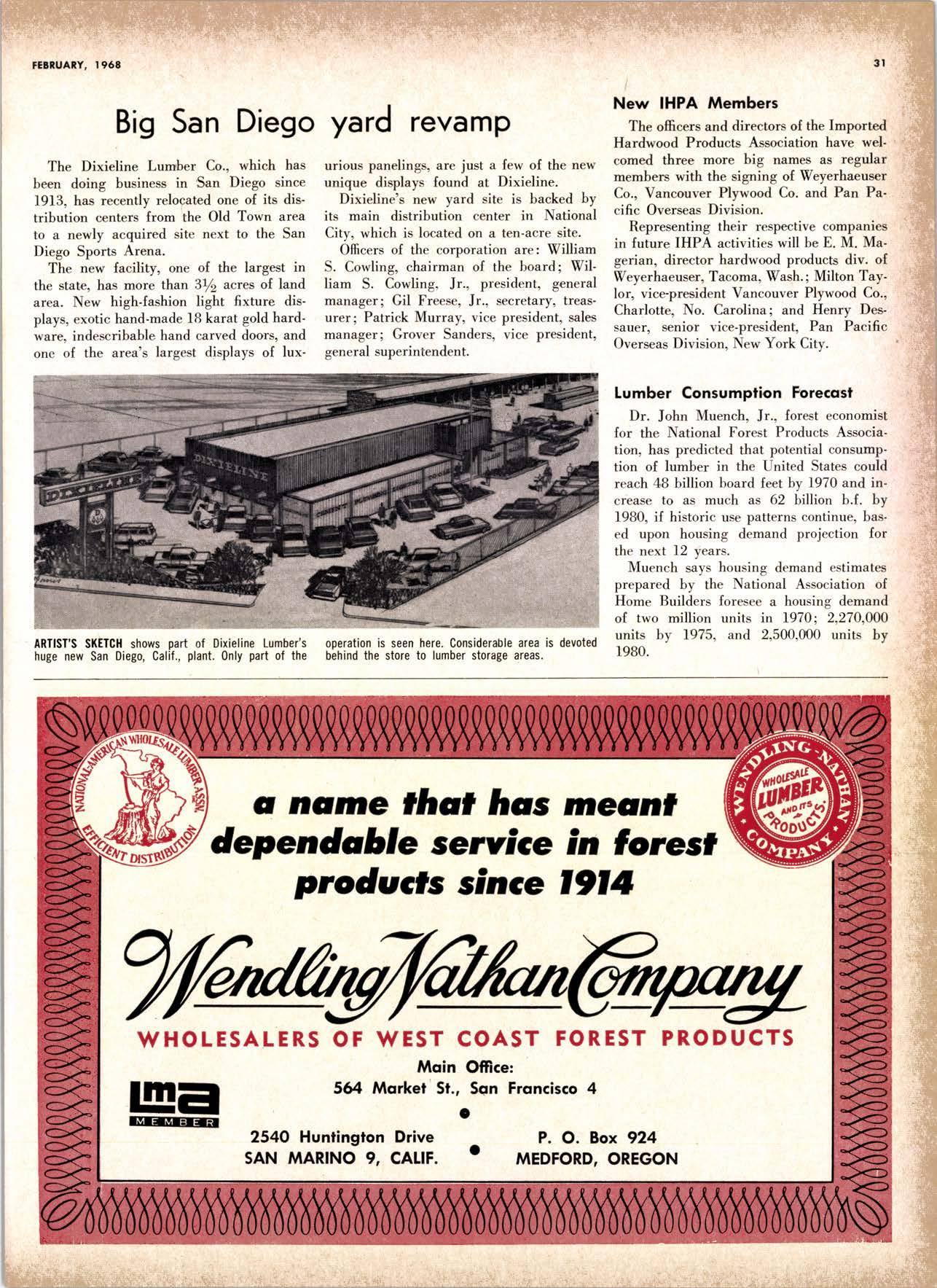
1 minute read
Big San Diego yard revamp
The Dixieline Lum'ber Co.. which has been doing business in San Diego since 1913, has recently relocated one of its distribution centers from the Old Town area to a newly acquired site next to the San Diego Sports Arena.
The new facility, one of the largest in the state, has more than 312 acres of land area. New high-fashion light fixture displays, exotic hand-made 18 karat gold hardware. indescribable hand carved doorso and one o{ the area's largest displays of lux- urious panelings, are just a few of the new unique displays found at Dixieline.
Dixieline's new yard site is backed by its main distribution center in National City, which is located on a ten-acre site.
Officers of the corporation are: William S. Corvling, chairman of the board; Villiam S. Cowling, Jr., president, general manager; Gil Freese, Jr., secretary, treasurer; Patrick Murray, vice president, sales manager; Grover Sanders, vice president, general superintendent.
New IHPA Members
The officers and directors of the Imported Hardwood Products Association have welcomed three more big names as regular members with the signing of Weyerhaeuser Co., Vancouver Plywood Co. and Pan Pacific Overseas Division.
Representing their respective companies in future IHPA activities will be E. M. Magerian, director hardwood products div. of Weyerhaeuser, Tacoma, Wash.; Milton Taylor, vice-president Vancouver Plywood Co., Charlotte, No. Carolina; and Henry Dessauer, senior vice-president, Pan Pacific Overseas Division, New York City.
Lumber Consumption Forecqsl
Dr. John Muench, Jr., forest economist for the National Forest Products Association, has predicted that potential consumption of lumber in the Llnited States could reach 48 billion board feet by 1970 and increase to as much as 62 billion b.f. by 1980, if historic use patterns continue, based upon housing demand projection for the next 12 years.
Nluench says housing demand estimates prepared by the National Association of Home Builders foresee a housing demand of two million units in 1970; 2,270,ON units by 1975, and 2,500,000 units by 1980.










